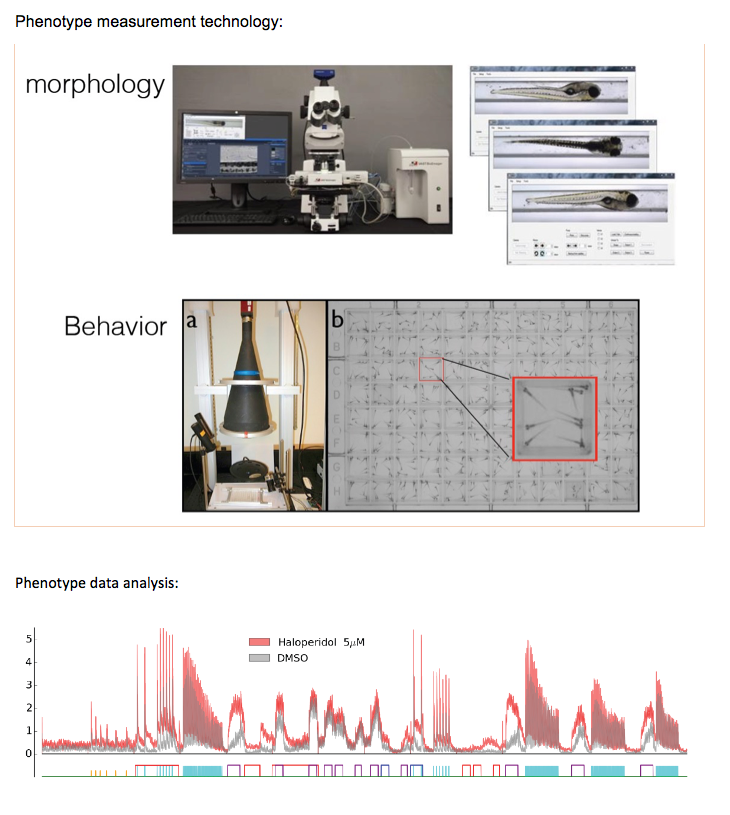
Technology: Zebrafish mutation model with morphological and behavioral phenotyping
-
Jing-Ruey Joanna Yeh, Ph.D.
Assistant Biologist
Massachusetts General Hospital
Assistant Professor of Medicine
Harvard Medical School
- David Kokel, Ph.D.
Assistant Professor Institute for Neurodegenerative Diseases
University of California, San Francisco
Overview
Zebrafish provide a unique opportunity to illuminate the genes of the druggable genome. Zebrafish possess complex vertebrate brains and a highly-conserved genome, but they also enable in vivo experimentation to be conducted at the scale and cost of many in vitro screens. Beyond characterizing nervous system phenotypes associated with gene loss-of-function, it is important to visualize the in vivo expression patterns for the genes of interest and to ablate the cells that express them. By providing detailed knock-out phenotypes, in vivo expression patterns, and a small molecule probe for each of the genes of interest, we hope to advance the important goal of illuminating the genes of the druggable genome. Systematically assigning function to the hundreds of uncharacterized genes in the druggable genome will require an approach that incorporates an in vivo model system, an efficient and affordable gene disruption technology, and the ability to phenotype broadly and quickly. It is difficult to define and prioritize understudied targets. But those that cause/impact phenotypes in living animals are likely to be especially important in biology and human disease. In phase I of the IDG project, we have learned that understudied genes may have relatively subtle phenotypes that may be more obvious in certain contexts. Comparing mutant vs WT responses to potential ligands is one way to focus on gene-specific effects. Another approach is to build stable mutant lines. Both approaches for whole organism phenotyping will be necessary to query this dark space.


